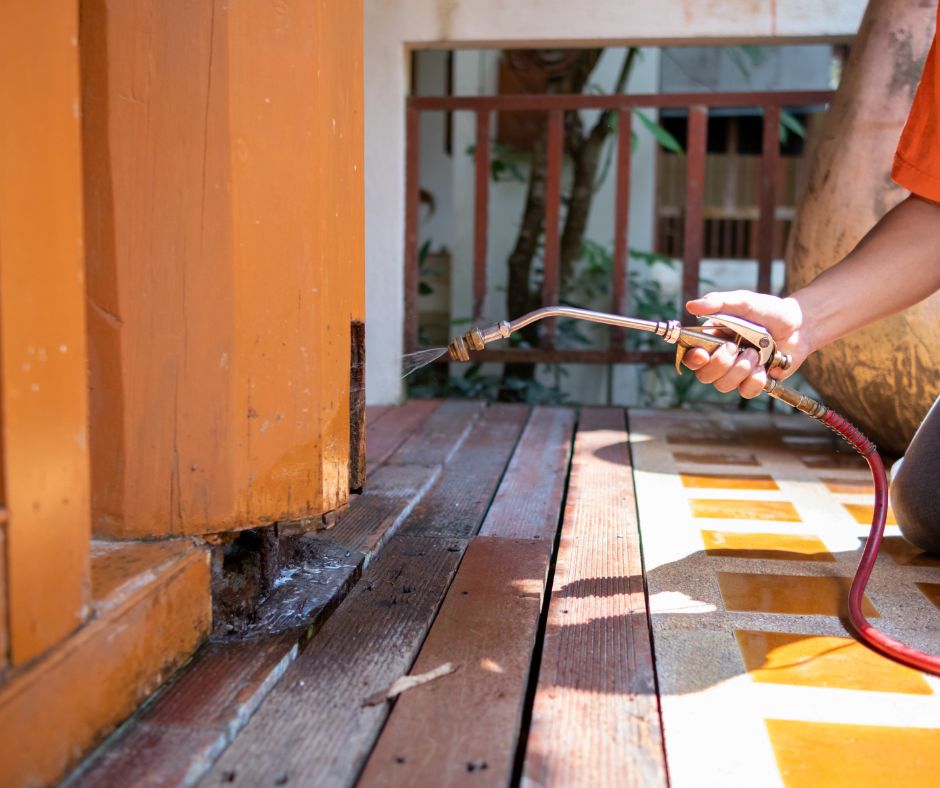Rodent Extermination with Port Charlotte Pest Control Service
Rodent Extermination with Port Charlotte Pest Control Service
Blog Article
Comprehensive Guide to Comprehending Insect Control Approaches and Their Treatment
Understanding insect control techniques is necessary for reliable monitoring of undesirable organisms that posture risks to health, agriculture, and property. This thorough guide will explore various techniques, consisting of chemical options, organic strategies, and mechanical strategies, all under the umbrella of Integrated Pest Monitoring (IPM) As we examine these methods, it becomes increasingly clear that the choice of approach can considerably influence both human rate of interests and environmental balance. What aspects should be taken into consideration when choosing the appropriate insect control approach for a details situation? The solution may cause even more lasting methods than one could at first assume.
Overview of Parasite Control Methods
Pest control approaches include a variety of methods developed to handle and eliminate undesirable organisms that can hurt human health and wellness, agriculture, and residential or commercial property. Reliable insect management is vital for maintaining the honesty of ecological communities and guaranteeing the safety and security of food materials. These techniques can be broadly classified right into three main methods: cultural, mechanical, and biological controls.

Cultural control involves changing farming techniques or ecological problems to minimize bug establishment and reproduction. Mechanical control relies on physical barriers or gadgets to avoid parasite access or directly eliminate them.
Organic control uses all-natural killers, bloodsuckers, or microorganisms to manage pest populations. This method highlights environmental balance and can consist of presenting valuable pests, such as ladybugs or predatory nematodes, to manage parasite visibility.
Integrated bug management (IPM) integrates these techniques, using a holistic technique that emphasizes avoidance, monitoring, and responsible management. By employing a blend of these methods, pest control can be extra lasting and effective, reducing dependence on chemical interventions while securing human wellness and the environment.

Chemical Pest Control Solutions
A range of chemical parasite control options are readily available, offering reliable choices for taking care of pest populations when various other methods might drop short. These options primarily include pesticides, herbicides, fungicides, and rodenticides, each developed to target specific insects while decreasing harm to non-target organisms.
Pesticides are particularly reliable versus a range of bugs, consisting of ants, cockroaches, and termites, and can be identified as contact or systemic agents. Get in touch with insecticides eliminate insects on call, while systemic pesticides are absorbed by plants, making them harmful to bugs that eat them. Herbicides are used to regulate undesirable plant life, whereas fungicides are necessary for taking care of fungal conditions that can damage crops and ornamental plants.
Additionally, integrated insect management (IPM) concepts need to be employed, combining chemical solutions with social, mechanical, and biological strategies for lasting parasite control. This all natural strategy not only enhances pest monitoring efficiency however also reduces possible environmental impacts associated with chemical usage.
Biological Parasite Control Methods
Organic bug control methods provide an environmentally pleasant alternative to chemical approaches by using natural killers, parasites, or virus to handle pest populaces. This technique leverages the ecological partnerships between microorganisms, promoting a well balanced environment while reducing chemical deposit in the environment.
Among one of the most usual biological control techniques involves the introduction of all-natural enemies. For example, ladybugs are employed to manage aphid populaces, while parasitic wasps can target caterpillars and other pests. These natural killers properly reduce pest numbers without harming beneficial bugs.
In addition, microbial representatives such as microorganisms, fungi, and viruses are made use of to contaminate and kill particular parasites. Bacillus thuringiensis (Bt), a normally happening bacterium, is commonly made use of to control caterpillars and other larvae, showcasing the efficiency of microbial bug control.

Physical and Mechanical Techniques
Frequently employed in incorporated pest management approaches, physical and mechanical approaches work as efficient devices for managing parasite populations without making use of chemicals. These strategies count on physical barriers, traps, and various other mechanical tools to prevent or eliminate pests, making them eco friendly choices.
Physical approaches include making use of barriers such as insect netting, screens, or row covers that physically obstruct pests from accessing plants. This is especially useful in farming settings where crop security is necessary. Furthermore, environment adjustment, such as eliminating debris and standing water, can minimize parasite reproducing websites, thereby minimizing infestations.
Mechanical techniques encompass catches, which can be made to catch specific parasites. Sticky traps and pheromone catches prevail instances that entice and maintain pests, assisting in surveillance and control. her comment is here Vacuuming is another mechanical approach, efficient for removing insects from interior settings, particularly in situations of problems.
Preventative Pest Administration Approaches
Effective preventative bug monitoring techniques are essential for maintaining healthy atmospheres and decreasing pest-related concerns before they occur (Pest Control in Port Charlotte, FL). These methods concentrate on aggressive actions that lower the possibility of bug invasions by resolving the origin

Another essential strategy involves appropriate landscape design practices (Pest Control in Port Charlotte, FL). Keeping vegetation cut and far from structures can minimize harborage locations for bugs. Carrying out integrated insect monitoring (IPM) strategies that click to read include keeping an eye on parasite populations and utilizing organic controls can foster a well balanced ecological community that naturally subdues pest numbers.
Education and training for personnel and homeowners on identifying early indications of parasite activity are also crucial parts of an efficient preventative program. By cultivating an environment of awareness and caution, companies and homeowners can substantially enhance their bug monitoring initiatives and safeguard their spaces against future invasions.
Conclusion
Finally, efficient parasite control needs a diverse method that incorporates chemical, organic, and mechanical approaches. Utilizing an Integrated Bug Management (IPM) structure enables the lasting management of bugs while minimizing environmental influence. Preventative strategies further enhance the efficacy of these methods, ensuring lasting defense of wellness, farming, and home. Ultimately, an extensive understanding of these varied parasite control strategies is essential for attaining effective results why not try these out in insect monitoring campaigns.
Report this page